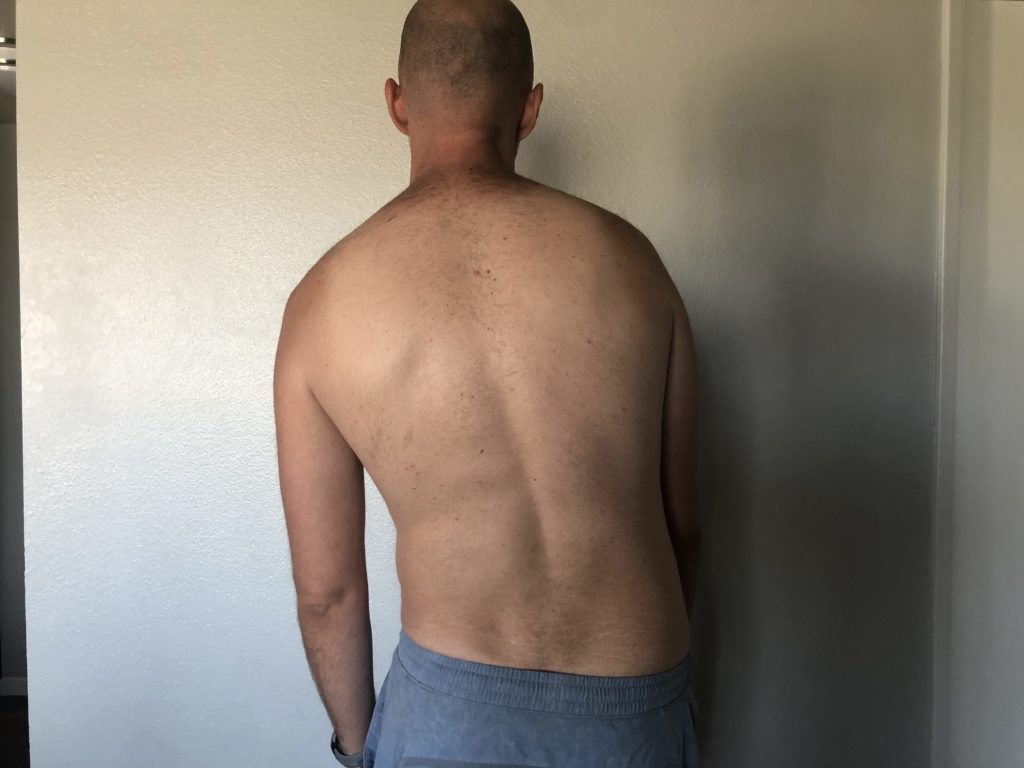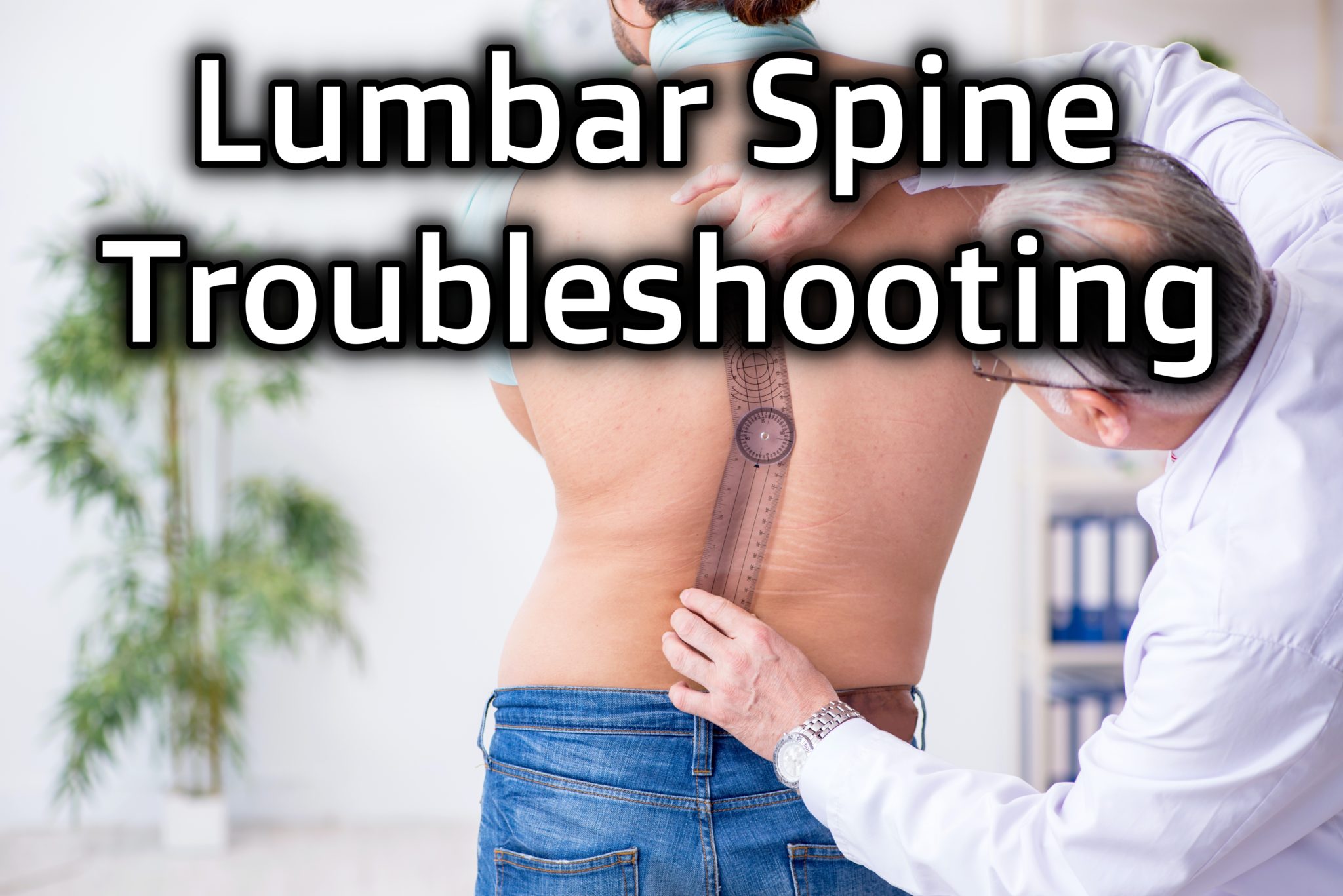Table of Contents
Lower back presentations that struggle with breathwork
You’ve spent all this time perfecting breathwork into your practice…then it happens:
This exercise hurts my back!
WTF amiright!?!?!?! The activities we’ve been painstakingly learning about, and then your client feels pain THE WHOLE TIME you try it.
This is especially true with:
- Lateral shifts
- Radiculopathy
- CRAZY Lordotic spines
What’s going on here?
Many times, especially if symptoms are high, the issues I see people make involve either progress WAY too quickly or going after the wrong impairment.
But don’t worry folks, I’ll do my darndest to make these presentations ridiculously simple for you.
If you have troubled lumbar spine presentations and you are unsure where to go, then you’ll definitely want to check out Movement Debrief Episode 131.
Watch the video below for your viewing pleasure, or listen to the podcast if you can’t stand the sight of me 🙁
and the audio version:
If you want to watch these live, add me on Instagram.

 t
tShow notes
Check out Human Matrix promo video below:
Below are some testimonials for the class:
Want to sign up? Click on the following locations below:
November 7th-8th, Charlotte, NC (Early bird ends October 11th at 11:55pm!)
February 20th-21st, 2021, Atlanta, GA (Early bird ends January 17th at 11:55 pm!)
May 1st-2nd, 2021, Minneapolis, MN (Early bird ends April 4th at 11:55pm!)
May 29th-30th, 2021 Boston, MA (Early bird ends April 25th at 11:55pm!)
August 14th-15th, 2021, Ann Arbor, MI (Early bird ends July 18th at 11:55pm!)
Dickinson College in Carlisle PA (POSTPONED DUE TO COVID-19) [Approved for 14 Category A CEUs for athletic trainers]
Montreal, Canada (POSTPONED DUE TO COVID-19) [6 CEUs approved for Athletic Therapists by CATA!]
Or check out this little teaser for Human Matrix home study. Best part is if you attend the live course you’ll get this bad boy for free! (Release date not known yet 🙁
Here is a signup for my newsletter to get nearly 5 hours and 50 pages of content, access to my free breathing and body mechanics course, a free acute:chronic workload calculator, basketball conditioning program, podcasts, and weekend learning goodies:
[yikes-mailchimp form=”1″ submit=”Get learning goodies and more”]
Bill Hartman has a great video dispelling misconceptions around anterior pelvic tilt. It’s. a must-watch.
Compensatory Movement Patterns – If you have no clue about the difference between primary and secondary movement compensations, this debrief should help. You’ll better learn when to apply certain exercises in a specific order to maximize movement improvements.
How to Coach the Stack – This position is fundamental for improving movement options. If you are just getting into coaching exercises in this fashion, this is the post.
Bill Hartman – If you want to learn the theory and practical components of many of the concepts I discuss, this man is pushing the field more than anyone else.
Ultimate Back Fitness and Performance by Stuart McGill – Although I disagree with a lot of his treatments, this book is an excellent resource on lumbar spine anatomy and biomechanics.
Course Notes: Explaining Pain Lorimer Moseley-Style – If you work with people in persistent pain, you MUST read this. It goes into the physiology surrounding how this happens and may help you learn how to better serve these clients.
Pat Davidson – One of the smartest trainers in the field. Excellent with physiology and pushing the training envoelope.
NOI Group – A great group to learn neurodynamics and pain science from.
Michael Shacklock – Mike is THE GUY for learning the biomechanical aspect of neurodynamics. I also did reviews on his book which you can check out here.
The Slump slider is a great neurodynamic move to apply with any posterior neural restrictions:
If you haven’t seen the Jefferson curl, here is a good example.
Is Spinal Flexion bad? – If you are afraid of flexing your spine, you NEED to check this out.
Hyperlordosis and rib flares
Question: What are your thoughts on someone who has a combination of hyperkyphosis and hyperlordosis with ribs flare? Could these be due to mouth breathing as compensation for improper breathing patterns? And how would you try to improve it?
Answer: First things first, we need to dispel some preconceived notions regarding posture. Some might call this a diss track (and by some I mean me):
- Static posture in and of itself doesn’t mean much.
- There is no singular cause for exhibiting a certain posture.
- There are likely structural, genetic, and behavioral influences that predispose someone to looking a certain way, posture included.
- We are mobile creatures, what is more important is expressing as many different movements as possible.
So really, fam, don’t sweat the posture you possess. What is more important is being able to move.
What could be an issue is an inability to move out of this posture. Examples may be an inability to reduce the lumbar lordosis or rib flare. This deficit may indicate restricted movement.
The most important piece to improving your movement is the stack. The easiest way to teach this concept is in the sidelying position. The reason being is because its gravity eliminated and minimizes rotational effects on the body.
From here, the pinnacle of lumbar spine curve reversal is achieving a full-depth vertical squat. Teaching the stack in this maneuver is the first line of defense, and the sink squat is a great way to do that.
From here, the best loaded version that makes stay vertical “easy” is the Zercher squat.
Flexed Lumbar Spine
Question: What is the lumbar spine looks relatively flexed and the arch starts at the thoracolumbar junction?
Answer: Although we cannot rely on static assessments, there may be some tests that indicate there is a loss of lumbar “extension” that may lead to drive an appropriate amount of this motion.
Here would be typical test findings:
- Decreased hip extension, adduction, and internal rotation measures
- Full hip flexion, abduction, and external rotation measures
If you have someone with this finding, choosing hip extension-based exercises are primo, as this will help restore normal sacral nutation, and subsequent lumbar lordosis.
One of my go-to’s is a glute bridge variation like this one:
Lateral shift
Question: Hey Zac, can you talk about a chronic lateral shift? Your take, management, and prognosis Toughest group for me.
Answer: A lateral shift is likely a compensatory action the lower back takes to offload an irritated nerve root and/or disc. It typically involves lateral flexion away from the affected area with a side glide. You’ll the top half of the body gliding away, and the lower half gliding towards.

In acute instances, this shift is useful at protecting the injured areas, but less desirable once the tissues have healed.
If looking at this shift from our perspective, you’d see two components that we’d need to address:
- thorax translated away from the lesion
- An oblique pelvis where the ipsilateral innominate “sits” lower than the contralateral.
With this presentation, the first line of defense is OF COURSE….
The Stack
With the translation of the lower thorax, the lower ribcage will need to be dropped downward to promote expansion of the involved side. The sidelying tilt progression per above is a great starting point.
Once you’ve gotten adequate ribcage positioning, squat progressions shown above are useful for opening up the neural foramen.
If your squat is on point, doing shiftwork that emphasizes oblique pelvic movement can assist in maximizing both expansion AND compression of the involved area. I start most peeps with a sidelying stride to introduce this concept:
Then I’ll progress to a standing version:
With my terminal exercise being a lateral squat or lunge. Add some rotation in the mix to REALLY get nuts!
If you’ve tried these activities and movement/symptom issues persist, neurodynamics could be a great next place to go. A simple way to incorporate these concepts is by slouching the spine during an offending movement, and performing the movement. I dive into this concept a bit more here.
Radicular symptoms during exercises
Question: I was wondering what kind of modifications you may make when teaching the stack and trying to restore movement options when a patient experiences radicular symptoms during resets?
I’m having good success with other treatment approaches for controlling their symptom profile, but am struggling to address their true underlying compensations/patterns without eliciting the radicular symptoms.
Answer: These symptoms are often associated with flexion intolerance, so do we do prone press-ups, and the angels will sing?
Ehhhhhhhhh…..
While I don’t F with McKenzie a whole lot, we can apply similar principles by emphasizing anterior expansion. Moves that bias sacral nutation and air into the chest.
Some of my starters include a wall and chair tilt with overhead reach:
The sink squat we have shown previously is also another money move. I also like to emphasize hip extension and adduction to drive sacral nutation. This move is pretty bomb.com for this:
My hypothesis as to why this approach works is because, in order for us to create movement, we need to have a contractile gradient. Certain things need to be concentric, and certain things need to be eccentric.
If we cannot establish a gradient (e.g. someone who has multidirectional limitations), this will likely lead to altered loading patterns when we perform an action. Perhaps in the case of radiculopathy, we may not have adequate segmental mobility going into certain positions, and increase strain occurs over the affected area.
Chasing anterior expansion helps create this gradient while choosing a direction that does not evoke symptoms. This may allow for more even loading distribution when you inevitably flex on fools.
And we always gotta flex on fools 😉
When to hip shift
Question: What test results would indicate when someone needs to get their shift together (aka a hip shift)?
Answer: Typically, I use hip shifting to clean up the last bit of motion that I wouldn’t normally get with stacking. If someone needs those last 10 degrees of rotation in any direction, a shift would be indicated.
However, milk the stack until that cow is DRY fam. Generally, if someone can attain a good looking squat to parallel, they can probably shift without too many issues.
Then, you may help them get their shift together!
Is the Jefferson Curl useful?
Question: I’m interested in some version of the gymnastics drill the “Jefferson curl” (extension from full forward-fold flexion but with hands-on legs) for those with narrow ISAs.
Some say that loaded /unloaded flexion drills are is just accumulating tissue damage, but I have doubts, assuming a person doesn’t jump up to loading too quickly.
Answer: I’ll preface that the Jefferson curl isn’t something I’ve really messed with a whole lot, so take what I have to say with a grain of salt.
First things first, I agree with you, caller, on doubting the flexion avoiders. I went ether on this topic here, and basically there is no evidence to support that flexion is dangerous under load. Most in vivo experiments say otherwise.
But does that make The Jefferson Curl useful?
The assumption we have here is that people can segmentally flex at all, which most peeps who are tight like a tiger cannot. So is the curl doing what we think it’s doing? Maybe not.
However, if you have someone who does has some segmental flexibility, I could see it being a useful progression. The person who comes to mind is the narrow infrasternal angle type who needs to progress nutation while maintaining an inhaled spine. In that case, it could be effective. You’ll also get some tissue tolerance into flexion, which is never a bad thing.
Sum Up
- For someone who has hyperlordosis and cannot reverse the curve, focus on the stack and progressing the squat to improve movement options.
- Truly flexed lumbar spines require driving sacral nutation through hip extension.
- Lateral shifts can be improved by stacking and working on oblique shifts in the pelvis.
- If one gets radicular symptoms with resets, chase anterior expansion before driving posterior expansion.
- Hip shifts are effective at cleaning up mobility deficits. Use this activity when you can squat to parallel
- The Jefferson Curl is likely safe to use IF you have some degree of segmental motion at the spine and need to progress sacral nutation under load.
Photo credit: Elnur Amikishiyev

